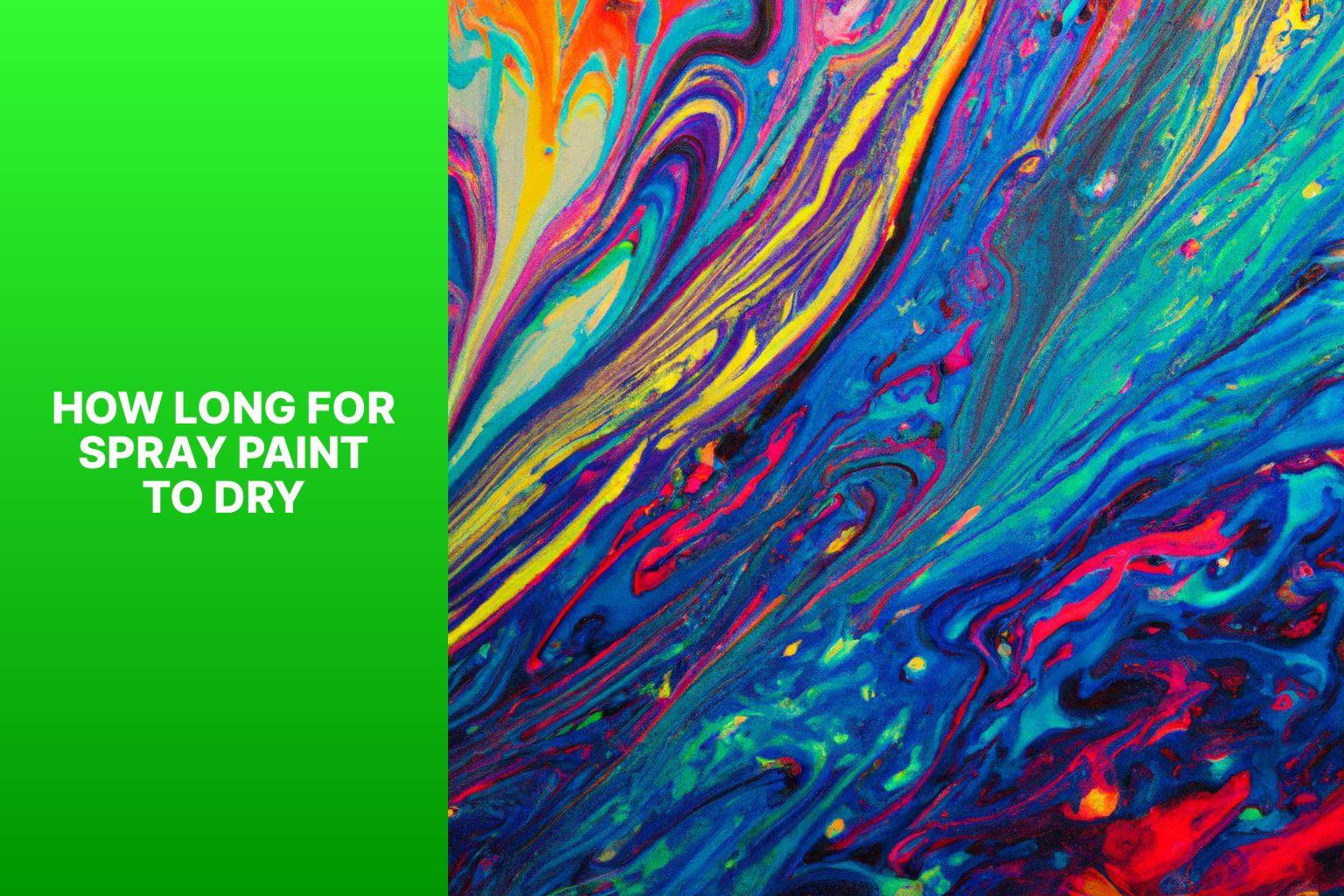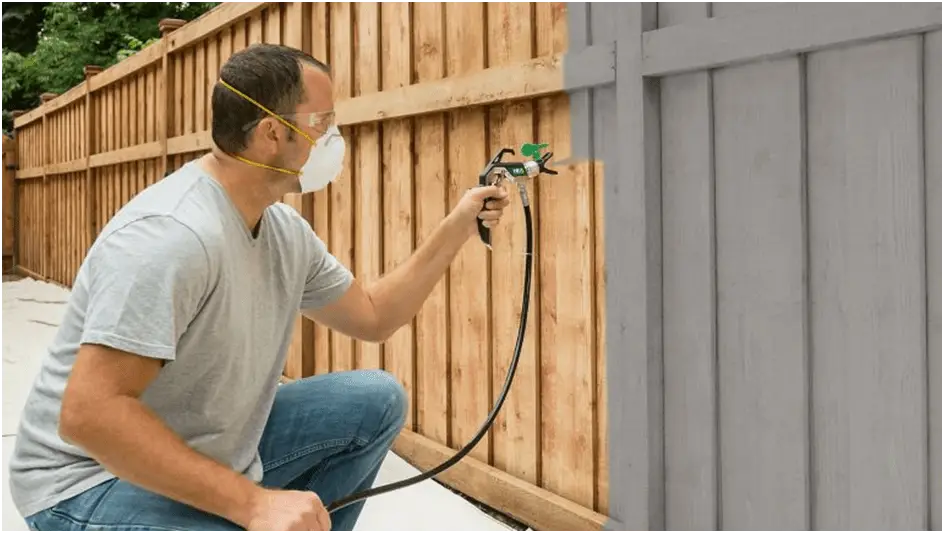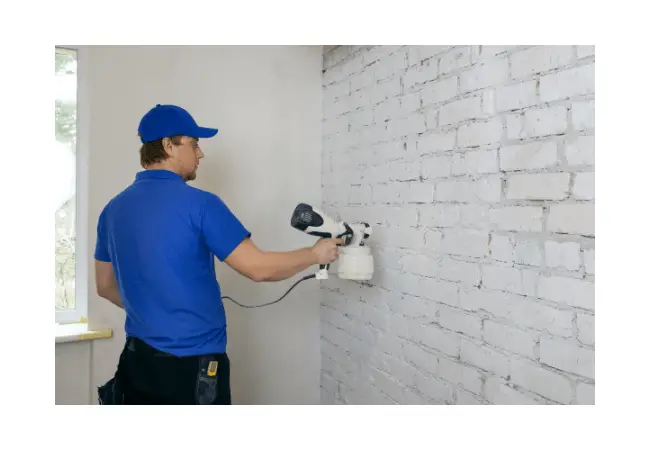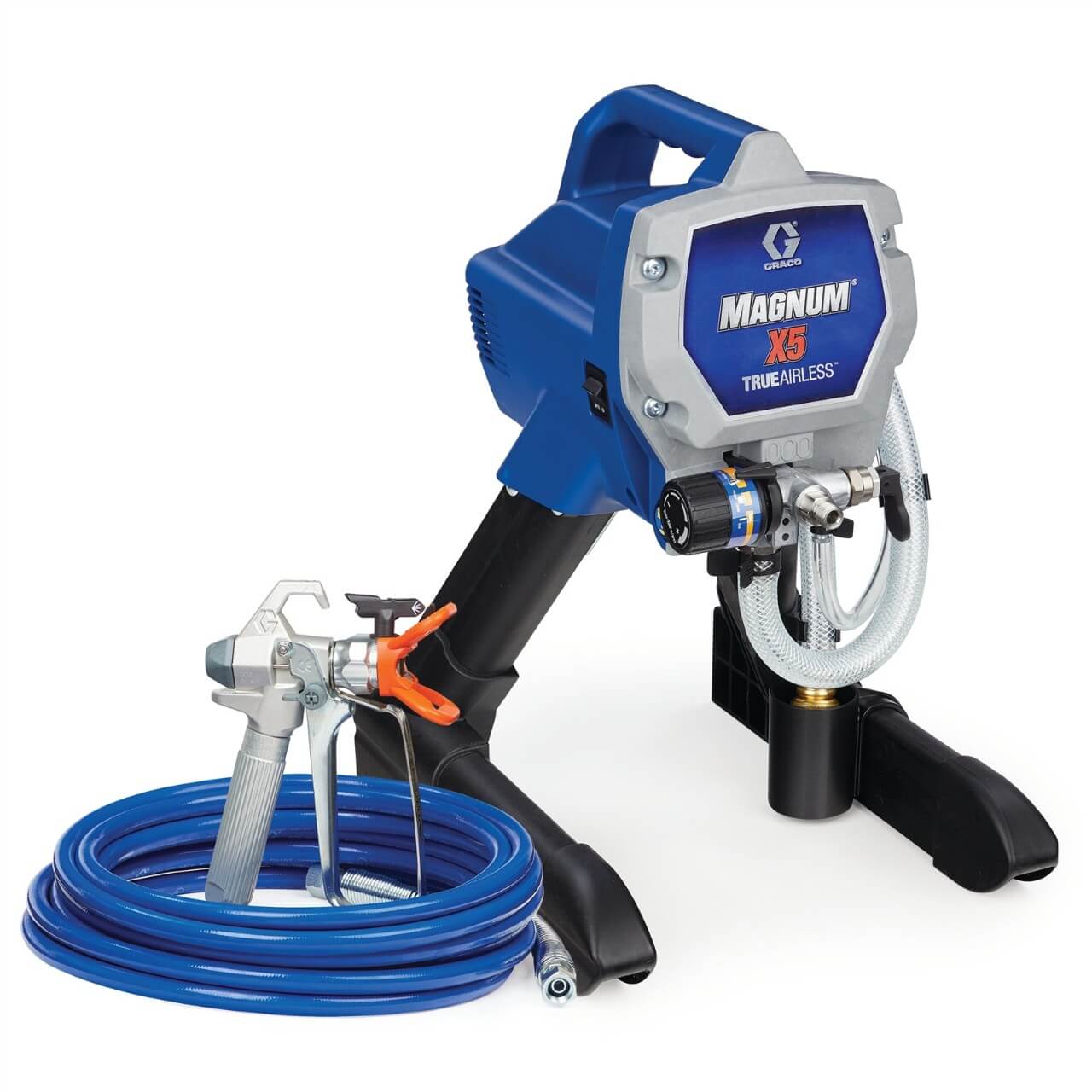Understanding Spray Paint Drying Time is crucial for ensuring successful and satisfactory results in your painting projects. The question of how long for spray paint to dry can vary depending on various factors.
Factors Affecting Spray Paint Drying Time:
- Type of Spray Paint: Different types of spray paint, such as water-based, oil-based, and acrylic, have different drying properties.
- Surrounding Temperature and Humidity: The ambient temperature and humidity levels in your environment can significantly impact the drying time.
- Surface Material: The type of surface you are painting on can affect how quickly the paint dries and adheres.
- Application Method: The thickness of the spray paint application and the technique used can also affect drying time.
How Long Does Spray Paint Take to Dry? The drying time can vary depending on the type of spray paint used:
- Water-based Spray Paint: Water-based spray paint typically dries faster, usually within 15-30 minutes.
- Oil-based Spray Paint: Oil-based spray paint takes longer to dry, often requiring 1-2 hours or more.
- Acrylic Spray Paint: Acrylic spray paint falls between water-based and oil-based, typically drying within 30 minutes to an hour.
To help speed up the drying process of spray paint, you can follow certain tips such as painting in a well-ventilated area, using thin coats, and applying paint in optimal temperature and humidity conditions.
Testing Spray Paint Dryness can be done through visual inspection for any wet or glossy areas and a touch test to ensure the paint is dry to the touch and won’t smudge.
To avoid common mistakes with spray paint drying, make sure to follow the instructions on the spray paint can, properly prepare the surface, and allow sufficient drying time between coats. By understanding the drying process of spray paint and applying these guidelines, you can achieve better results with your spray paint projects.
Table of Contents
Key takeaways:
- Understanding Spray Paint Drying Time: It is important to know the drying time of different types of spray paint to ensure a successful painting project.
- Factors Affecting Spray Paint Drying Time: The type of spray paint, surrounding temperature and humidity, surface material, and application method all play a role in how long spray paint takes to dry.
- How Long Does Spray Paint Take to Dry? Water-based spray paint typically dries faster than oil-based and acrylic spray paint. The drying time can range from a few minutes to several hours.
- Tips for Faster Drying of Spray Paint: To speed up the drying process, you can increase air circulation, use a fan or heat source, or choose a fast-drying spray paint.
- Testing Spray Paint Dryness: Visual inspection and touch tests can help determine if the spray paint is fully dry and safe to handle.
- Common Mistakes to Avoid with Spray Paint Drying: Rushing the drying process, applying too many coats at once, or using incompatible materials can lead to poor results and longer drying times.
Understanding Spray Paint Drying Time
Understanding Spray Paint Drying Time
Spray paint drying time is crucial for achieving optimal results. Follow these steps:
1. Choose the right paint: Different types have varying drying times. Read the label and select a paint that suits your project.
2. Prepare the surface: Ensure it is clean, dry, and free from dust or debris. This helps the paint adhere properly and speeds up drying.
3. Apply thin coats: Thin coats dry faster, reducing the risk of drip marks or uneven coverage.
4. Ensure proper ventilation: Use a well-ventilated area or fans/open windows to circulate air and promote faster drying.
5. Wait for recommended drying time: Each brand/type has its own recommended time. Avoid touching until it has passed to prevent smudging or damage.
True story: I once transformed an old wooden chair with spray paint. Following these steps, I applied thin coats and waited for the recommended drying time. The result was a beautifully revamped chair that looked brand new. By understanding spray paint drying time and following the proper process, I achieved a successful DIY project.
Factors Affecting Spray Paint Drying Time
Curious about how long it takes for spray paint to dry? Let’s dive into the factors that can influence the drying time of spray paint. From the type of spray paint used to the surrounding temperature and humidity, as well as the surface material and application method – each of these elements plays a role in how quickly your paint job will dry. Stick around as we uncover the key factors and share insightful tidbits to help you achieve the perfect finish.
Type of Spray Paint
The type of spray paint you choose greatly impacts the drying time and overall performance of your project. It’s important to consider the different types of spray paint available to achieve the desired results.
One option is water-based spray paint, which uses water as its solvent. This type of paint dries quickly, typically within 30 minutes to 1 hour, depending on factors such as thickness and environment. In addition to its fast drying time, water-based spray paint offers the benefits of low odor and easy cleanup with soap and water.
Another option is oil-based spray paint, which relies on mineral spirits or other petroleum-based solvents. Unlike water-based paint, oil-based paint takes much longer to dry and fully cure. It generally requires 24-48 hours to fully cure, but it offers durability and resistance to moisture and harsh weather conditions.
For a balance between fast drying time and durability, acrylic spray paint is a suitable choice. It contains water-based and acrylic polymers, providing a smooth, glossy finish. Acrylic spray paint usually dries within 1-2 hours, making it a popular option for various projects.
When selecting the right spray paint, consider factors such as desired drying time, painting surface, and specific project requirements. This way, you can ensure that you choose the appropriate type of spray paint for your needs.
Surrounding Temperature and Humidity
Spray paint drying time is influenced by the surrounding temperature and humidity. Higher temperatures accelerate the drying process, whereas lower temperatures decelerate it. Similarly, elevated humidity levels decelerate drying, while low humidity expedites it. It is important to mention that excessively high humidity can significantly prolong the drying duration of spray paint. In such instances, it is advisable to refrain from painting or employ a dehumidifier or fan to decrease humidity and facilitate faster drying.
Surface Material
| Surface Material | |
| Wood | 2-4 hours |
| Metal | 1-2 hours |
| Plastic | 1-2 hours |
| Glass | 30 minutes – 1 hour |
| Fabric | 2-3 hours |
The drying time of spray paint depends on the surface material. Different materials have different drying times due to their properties.
Wood surfaces typically take 2-4 hours to dry completely. Wood is porous and absorbs the paint, requiring more drying time.
Metal surfaces have a faster drying time of 1-2 hours. Metal is less porous, allowing the paint to dry quicker.
Plastic surfaces have a similar drying time to metal, usually taking 1-2 hours. Plastic is smooth and non-porous, enabling faster paint adhesion and drying.
Glass surfaces have the fastest drying time, usually taking 30 minutes to 1 hour. Glass is non-absorptive, allowing for quick drying and a smooth finish.
Fabric surfaces take around 2-3 hours to dry completely. Fabrics absorb the paint, requiring additional drying and setting time.
Considering the surface material is important to ensure proper application and avoid smudging or paint damage. Keep these drying times in mind for optimal results.
Application Method
When applying spray paint, the method is essential for drying time. Follow these steps for effective application:
- Prepare the surface: Thoroughly clean and dry the surface, removing any dust or debris.
- Shake the can: Vigorously shake the can for a few minutes to mix the pigment and solvents properly.
- Maintain distance: Hold the can 8-12 inches away from the surface for even application. Too close results in a heavy, uneven coat, while too far causes a light, patchy coat.
- Apply thin layers: Instead of a thick coat, apply multiple thin layers with a gentle sweeping motion. This improves adhesion and speeds up drying.
- Overlap strokes: Overlap each stroke slightly to ensure full coverage and avoid missed spots or uneven areas.
- Allow drying time between coats: If applying multiple coats, wait for the recommended drying time mentioned on the can. This prevents running or smudging.
True story: A friend of mine once painted a table using spray paint but didn’t follow the proper application method. She sprayed too close, resulting in drips and an uneven finish. It took longer for the paint to dry, and she had to sand it down and start over. Lesson learned: the correct application method is crucial for a smooth and even paint job.
How Long Does Spray Paint Take to Dry?
.jpg)
Spray paint drying time is a crucial consideration for any project. In this section, we’ll uncover the factors that influence drying time and explore the differences between water-based, oil-based, and acrylic spray paints. Discover how these distinct formulations impact the speed at which your paint job dries, ensuring you have all the information you need for a successful and efficient painting endeavor.
Water-based Spray Paint
Water-based spray paint, also known as waterborne paint, is a type of paint that utilizes water as its solvent. Unlike oil-based spray paint, water-based spray paint dries much faster, usually within 30 minutes to an hour. One major advantage of water-based spray paint is its easy clean-up process. While the paint is still wet, it can be easily cleaned up with water.
Water-based spray paint has a lower level of toxicity and odor compared to its oil-based counterpart.
Due to its lower amount of volatile organic compounds (VOCs), water-based spray paint is ideal for indoor use. It can be effectively used on various surfaces such as wood, metal, plastic, and fabric. Prior to using water-based spray paint, it is crucial to shake the can thoroughly to ensure proper mixing of the paint components.
To achieve the best results, it is recommended to apply thin and even coats of water-based spray paint. This helps to prevent the formation of drips or runs. Depending on the desired color and opacity, multiple coats may be necessary to achieve full coverage. It is important to note that the drying time of water-based spray paint can be expedited by avoiding spraying in cold or humid conditions.
Oil-based Spray Paint
When using oil-based spray paint, there are important factors to consider:
1. Drying Time: Oil-based spray paint takes longer to dry than water-based or acrylic spray paint. It may take anywhere from 6 to 24 hours to fully dry.
2. Surface Preparation: Before applying oil-based spray paint, ensure the surface is clean, dry, and free of dust or debris. Properly preparing the surface promotes better paint adherence and quicker drying.
3. Temperature and Humidity: The drying time of oil-based spray paint is affected by surrounding temperature and humidity levels. Warmer temperatures and lower humidity levels speed up drying, while colder temperatures and higher humidity levels slow it down.
4. Thinner Coats: Applying thinner coats of oil-based spray paint helps speed up drying time. Thick layers take longer to dry and may result in uneven drying or wrinkling.
5. Proper Ventilation: Ensure proper ventilation when using oil-based spray paint to avoid harmful paint fumes. Work in a well-ventilated area or use a respirator mask.
By considering these factors and following the necessary precautions, you can achieve the best results when using oil-based spray paint.
Acrylic Spray Paint
Acrylic spray paint is popular for DIY projects and professional painters. When using acrylic spray paint, it is important to consider several factors.
The drying time of acrylic spray paint is usually quite fast, typically within 20-30 minutes. This quick drying time allows for efficient work.
Secondly, surface preparation is crucial. To ensure better adhesion and a smoother finish, it is important to clean the surface thoroughly, making sure it is dry and free of any dust or debris.
The number of coats needed may depend on the desired coverage and color intensity. In some cases, multiple coats may be necessary. It is recommended to allow each coat to dry for at least 20 minutes before applying the next one.
Temperature and humidity levels can also affect the drying time of acrylic spray paint. Higher temperatures and lower humidity levels tend to speed up the drying process.
It is important to work in a well-ventilated area when using acrylic spray paint. This helps to dissipate fumes and aids in the drying process.
By considering these factors, you can achieve a beautifully finished project with efficiently dried acrylic spray paint.
Tips for Faster Drying of Spray Paint
When spray painting, drying time can be a hassle. To achieve faster results and speed up the process, here are some helpful tips for faster drying of spray paint:
1. Prepare: Before you start painting, make sure to clean and dry the surface. This will help the paint adhere better and dry faster.
2. Use thin coats: Instead of applying thick layers of paint, opt for thin coats. Thick layers take longer to dry and can lead to drips and uneven drying.
3. Avoid high humidity: Painting in low humidity conditions will reduce drying time. So, try to avoid spray painting on humid days.
4. Ensure proper ventilation: Improve air circulation by opening windows or using fans. This will help the paint dry faster and achieve better results.
5. Allow drying time between coats: To prevent merging and prolonging drying time, make sure to let each coat dry before applying the next one.
By following these tips, you can significantly reduce the drying time of your spray paint. It’s always important to consult the instructions on the paint can for specific drying times and any additional recommendations.
Testing Spray Paint Dryness
Curious about how long it takes for spray paint to dry? In the section “Testing Spray Paint Dryness,” we’ll dive into two methods: visual inspection and the touch test. Discover the key indicators that will help you determine whether your freshly sprayed surface is fully dried. No more guesswork – we’ll equip you with practical techniques to ensure your spray paint is perfectly dry before moving forward with your project. Let’s get started!
Visual Inspection
Visual Inspection
A visual inspection is crucial to determine the dryness of spray paint. It allows you to assess the surface and ensure the paint has dried completely.
To conduct a visual inspection, follow these steps:
1. Examine the painted surface under good lighting conditions. Look for shiny or wet areas, indicating that the paint is still wet and needs more time to dry.
2. Check for visible brush strokes or unevenness in the paint. Smooth and uniform paint suggests it is dry. Imperfections or inconsistencies may indicate the paint is still drying or not fully cured.
3. Pay attention to the paint’s color. Wet paint may appear darker or have a different sheen compared to dry paint. Consistent color matching the desired result is a good indication of dryness.
4. Consider the recommended drying time mentioned on the spray paint can or manufacturer’s instructions. If the specified time has passed, the paint is likely to dry. Factors like temperature, humidity, and the type of spray paint used can affect drying time, so consider these as well.
Remember to be patient and thorough during the visual inspection process. Rushing can result in accidental smudging or damage to the paint job.
Touch Test
The touch test is a crucial step in determining if spray paint is dry. To perform the touch test, please follow these steps:
- First and foremost, make sure that the painted surface is completely dry before proceeding with the test.
- Gently press your finger onto a small and inconspicuous area of the painted surface.
- Carefully check for any signs of paint residue or color transfer on your finger. If you do not notice any residue or color transfer, it is likely that the paint has dried.
- If you do observe any residue or color transfer, it indicates that the paint is still wet and requires more time to dry. It is important to avoid touching the surface and patiently wait for it to dry completely.
Let me share a true story to emphasize the significance of the touch test. Sarah, while working on her DIY project, decided to touch the spray paint after waiting for just a few hours. Sadly, this impatience resulted in a fingerprint mark, causing damage to her hard work. It was this incident that taught Sarah the importance of the touch test and the value of exercising patience when it comes to the drying process of spray paint. Consequently, she now waits until the paint is fully dry before she dares to touch or handle her projects, ensuring a flawless finish every time.
Common Mistakes to Avoid with Spray Paint Drying
When it comes to spray paint drying, it is important to avoid common mistakes to achieve the best results. Follow these tips for optimal drying:
– Do not rush the drying time. Always follow the manufacturer’s instructions and allow sufficient drying time between coats.
– For proper drying, apply thin and even coats. Avoid applying multiple thick coats, as this can prolong the drying process and lead to uneven drying.
– Work in a well-ventilated area with optimal temperature and humidity conditions. High humidity and cold temperatures can have a negative impact on the drying process.
– To prevent smudges, fingerprints, or damage to the paint finish, refrain from touching or moving the painted object before it is fully dried.
– Before applying the spray paint, make sure to use a suitable primer. This will ensure good adhesion and durability of the paint job.
By avoiding these common mistakes and following proper techniques for spray paint drying, you can achieve a smooth and long-lasting finish. Happy painting!
Frequently Asked Questions – How Long for Spray Paint to Dry
1. How long does it take for spray paint to dry?
The drying time for spray paint can vary depending on several factors such as the type of paint, the material being painted, and atmospheric conditions. Fast-drying spray paint can dry in as little as five minutes, while other types may take up to eight hours to fully dry.
2. What factors can affect the drying time of spray paint?
Several factors can influence the drying time of spray paint, including the type of paint used, the thickness of application, the material being painted, and the local climate. The texture of the surface being painted can also impact drying time.
3. How long does it take for lacquer spray paint to dry?
Lacquer spray paint typically takes about three hours to dry. It is considered one of the faster-drying paints compared to other types such as oil-based paint.
4. What is the average drying time for polyurethane paint?
Polyurethane paint takes approximately two hours to be ready to touch, and it requires about three days to fully dry. It is important to follow the manufacturer’s recommendations and allow sufficient drying time for optimal results.
5. Can spray paint be used on raw wood?
Yes, spray paint can be used on raw wood. It is recommended to sand and prime the wood before painting to ensure proper adhesion of the paint. The drying time for spray paint on wood is typically about one hour to dry to the touch and up to 24 hours for full curing.
6. How can I speed up the drying time of spray paint?
To speed up the drying time of spray paint, you can apply thin coats of paint, increase air circulation through open windows or fans, reduce humidity in the air with a dehumidifier, and raise the temperature in the room. It is important to ensure optimal conditions for drying while following the package instructions and paint formula recommendations.





Leave a Reply